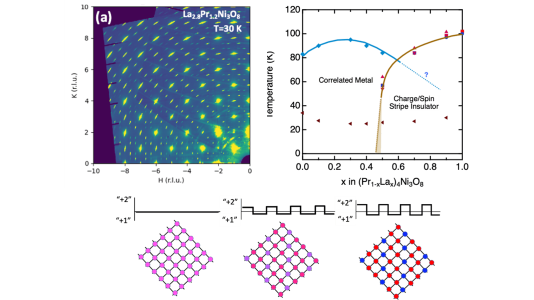
Scientific Achievement
We have located a quantum phase transition in the quasi-2D nickelate (Pr1-xLax)4Ni3O8 (PLNO) between a correlated metal and a charge- and spin-stripe insulator.
Significance and Impact
Our findings reveal PLNO as a model system to explore either a clean quantum critical (QCP) point or a disorder-driven Griffith’s QCP, giving the first clear view of these quantum phenomena, unobscured by competing quantum states, such as superconductivity
Research Details
- Crystals were grown using unique high-pressure furnace at oxygen pressures between 50-200 atmospheres.
- A combination of single-crystal x-ray, magnetic, thermodynamic, and transport data reveal the charge- and spin stripe ordered phase ‘melting’ into a correlated electron metal.
Argonne National Laboratory seeks solutions to pressing national problems in science and technology. The nation’s first national laboratory, Argonne conducts leading-edge basic and applied scientific research in virtually every scientific discipline. Argonne researchers work closely with researchers from hundreds of companies, universities, and federal, state and municipal agencies to help them solve their specific problems, advance America’s scientific leadership and prepare the nation for a better future. With employees from more than 60 nations, Argonne is managed by UChicago Argonne, LLC for the U.S. Department of Energy’s Office of Science.
The U.S. Department of Energy’s Office of Science is the single largest supporter of basic research in the physical sciences in the United States and is working to address some of the most pressing challenges of our time. For more information, visit https://energy.gov/science.